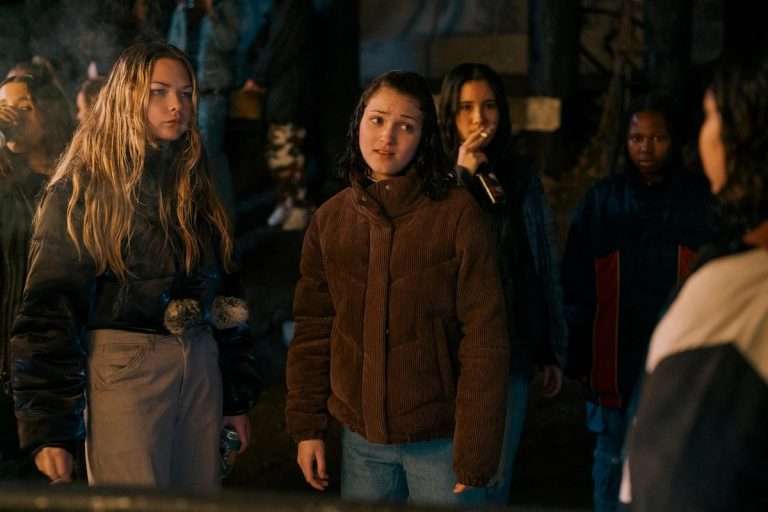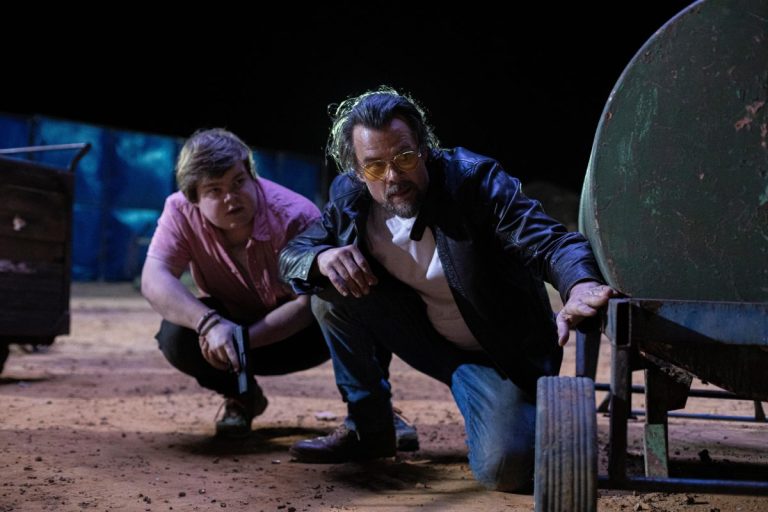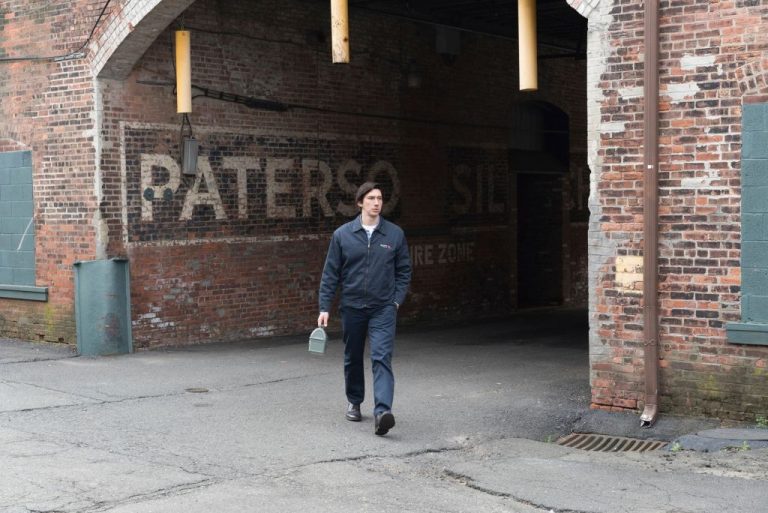Lola (2022) Movie Review: In a Sussex country house, an edited celluloid film is found. This contains the story of two sisters, Thomasina (played by Emma Appleton) and Martha (played by Stefanie Martini), who built a machine – no lesser than a time machine – that can intercept broadcasts of television and radio from the future. They named this machine Lola in honor of their mother. The period of this discovery clashes with one of the most important events in the 20th century – World War II. First-time filmmaker Andrew Legge’s film, Lola (2022), is a seventy-nine minutes-long black and white found footage of how this unique machine went on to become an instrument in Britain’s war efforts while the sisters’ lives are wrecked, and an alternate fascist reality is envisioned.
In one of my favorite scenes, Martha lets her lover in her room, where she keeps all the reels of her films and all the pictures she has printed out from the past and the future she is interested in. It is a moment in time when the past and the future are perfectly encapsulated in the present, giving us a glimpse into the power the sisters were enjoying over mere mortals of her age. When he points at the picture of a young man and asks her who the chap is, Martha proudly states that it is the portrait of a musician named Bob Dylan, one of her ‘all-time favorites’ because he sings about ‘the freedom and heartbreak of a nation lost’ and the ‘joy and pain of an authentic soul.’
They are in the 1940s, but the sisters are caught up with the musical revolution, scientific achievements, and women’s liberation movements that will become a part of popular culture in the future, including Stanley Kubrick. However, we soon learn that the sisters themselves are unaware of the implications of their unsolicited peeping into the future. The consequences soon start presenting themselves, and Martha knows that it is essential for her to leave behind a message for her sister – Thom, I hope this film will find you and stop you – that goes on to bind the film into a neat circle.
This is a film-within-a-film with all the qualities necessary to keep you glued to the screen during its runtime. Although the film begins with Martha narrating it and, for the most part, she is also shooting the film, we are bound to wonder how the voiceover or the footage of war-stricken Britain comes to feature in this otherwise first-person narrative.
In fact, for a brief while in the second half, the footage has a third-person informational bent. If you can choose to suspend your sense of disbelief to a large extent willingly, you will find yourself both shocked and haunted by the idea of Churchill’s defeat and Fascism’s all-consuming power in this dystopian future. If you cannot let your imagination fill in the gaps, it is completely alright. In that case, the film will disappoint you because of the possibilities of character development of Thomasina and Martha, which are sacrificed in the process.
There is a point in the film when Martha wishes to introduce her lover to David Bowie but can’t seem to find his presence by tuning Lola to the right frequency. They conclude that they may be erasing the future in the ways they seem to manipulate the information they retrieve from it. This phenomenon is largely true for Legge’s movie as well. The farther we are from the starting line, the more we must let our imagination fill the gaps in storytelling. Bathtub routines and frivolous wine-drinking exercises aside, I really wished for Legge to bring out the bond shared between the two sisters as the highlight of the footage within the film.
The current interest in movies revolving around World War II is intriguing. While Nolan’s Oppenheimer (2023) continues to witness houseful theatres across the globe and Nitesh Tiwari’s Bawaal (2023) threatens to internationally bring into question the Bollywood film’s understanding of the war’s victims, Legge’s Lola (2022) may be best suited for an audience who wishes to strike the middle ground. It is a smartly conceptualized film that will make you think of all the ‘what if-’ questions if such a machine were ever to be produced today. However, it only fails to rise above the mediocre by a slight margin.





![Recovery [2021]: ‘SXSW’ Review – A Charming, Clever COVID Comedy](https://79468c92.delivery.rocketcdn.me/wp-content/uploads/2021/04/Recovery-2-768x327.jpg)

![The pre-reviews of The Man Who Killed Don Quixote [2018]](https://79468c92.delivery.rocketcdn.me/wp-content/uploads/2018/05/the-man-who-killed-don-quixote-1024x576-768x432.jpg)


